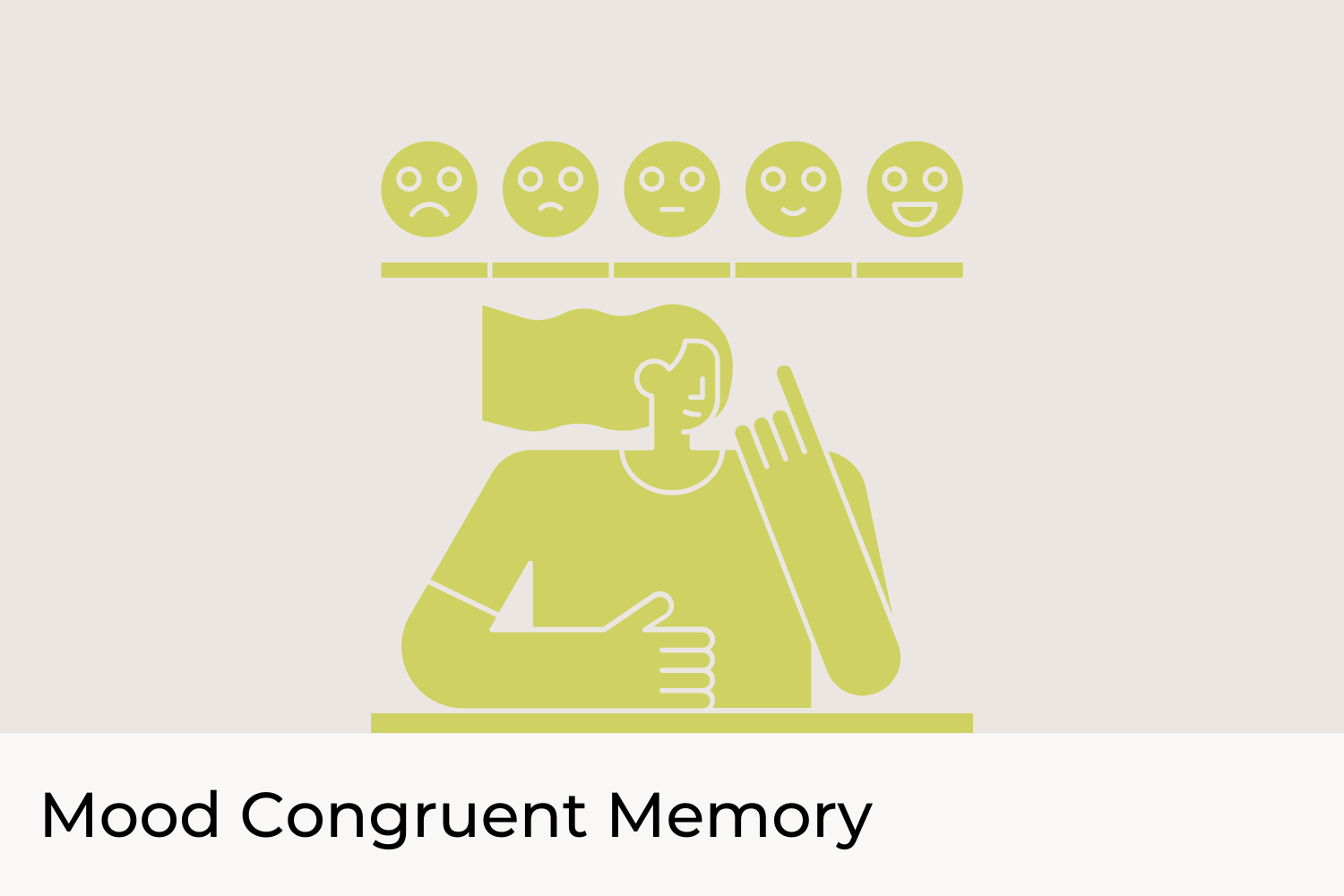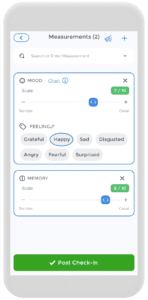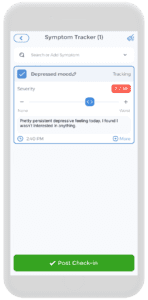
Our emotions are a huge part of our daily life and can affect us in ways that we may realize and ways that we may not. Our emotions most definitely have an impact on our actions and our reactions, but what about the lesser-known processes we don’t pay attention to, such as the formation of our memory? Recently, a large emphasis has been placed on the role of emotion in the formation and subsequent retrieval of our memories.
This overlapping emotion-memory phenomenon is known as mood-congruent memory and has many implications when it comes to mood and memory disorders. In fact, sometimes your memories can trigger intense emotions that can be difficult to deal with. CareClinic offers a safe and reliable space for you to track your emotions and ensure you feel happy, and healthy at always at your best!
Making Memories
When we encounter information in our lives, certain groups of brain cells – called neurons – fire with activity, creating what is known as a memory trace1. These different groups of neurons are responsible for the different thoughts, perceptions and reactions to experiences we encounter in life. Memory is essentially the reactivation of these memory traces and combinations of specific groups of neurons1.
Synaptic Plasticity
You may be wondering how these specific combinations are chosen to be reactivated over any other combination. The answer would be synaptic plasticity1. Synaptic plasticity refers to the strengthening or weakening of connections between neurons. These connections are known as synapses and it is these synapses that are stronger the more frequently they are activated.
Inactive connections, contrarily, become weaker and eventually, simply disappear1. Additionally, synaptic plasticity allows for your connections to also change over time1. For example, as a child, the way you might recall the image of a house may be more 2D and simplistic, comprised of a 2D image of a house drawing. However, if you were to recall the image of a house now, you might think more about the place you are currently living in, a much more realistic rendering of what your house looks like. Overall, synaptic plasticity is what allows you to change the way these connections work build or take away from them as you grow through life.
The Types of Memories We Form
There are many different types of memories we can form depending on the type of information being encountered.
Sensory Memories
If you were asked to describe your experience in a particular situation, it is highly likely that some key describing features you may choose to include would be related to your senses. What we see, hear, smell, touch, and taste are large parts of our everyday life and activity. Thus, it makes sense for these senses to be stored in what is known as sensory memory2. Moreover, sensory memory is quite temporary, lasting only milliseconds and is often encoded unconsciously2.
Explicit Memories
Your explicit memory is responsible for storing facts and events you consciously pay attention to. You can further break down your explicit memory into 2 parts: your episodic and semantic memory2.
Episodic Memories
Your episodic memory consists of the facts of your daily life2. For example, your episodic memory is responsible for recalling what you ate from breakfast earlier in the day, or what you watched on TV the night before. This type of memory is always referred to yourself, meaning it is completely autobiographical2.
Semantic Memories
Semantic memory, on the other hand, is responsible for storing knowledge about the world that you learn2. This can include, for example, rules, the customs of the place you reside in, and even the meaning of new words you learn. For this reason, semantic memory is often referred to as general world knowledge2.
Implicit Memories
While your explicit memory is conscious, your implicit memory is effectively the complete opposite. Implicit memory is responsible for the behaviors and knowledge you learn unconsciously2. For example, maybe you’ve caught yourself singing the lyrics to a song you’ve heard a few times on the radio. You may not have set out to memorize the song, but you’ve done so unconsciously. This type of memory is known as implicit memory2.
Autobiographical Memories
Autobiographical memory is more of an umbrella term for all memory you have of personal events in your life3. This is the type of memory you refer to when you tell someone a story about your childhood. It’s the kind of memory that contains the knowledge that makes you, well, you. Your self-identity and your experiences are all stored within your autobiographical memories3.
The Creation of False Memories
Sometimes, it can feel as though our brain is playing tricks on us. For example, maybe you swear you turned on the dishwasher before you left, but low and behold, it’s off and unused when you get home. False memory is responsible for these instances. A false memory is essentially a recollection that feels real but is modified in some way or form4. This doesn’t necessarily mean for the negative – often false memories are accidental and not harmful. However, they can have significant consequences if you remain unaware of their potential presence4.
The Suggestibility of our Memory
Our memory is actually quite suggestible – especially if it hasn’t been properly consolidated yet with time, rehearsal and sleep4. If someone is to ask you a question about an event – say for example, if your best friend is wearing a red hat – when in actuality it is a blue hat, the fact that the suggestion was made can plant a memory that isn’t real. This type of information is referred to as misinformation. Misinformation plays a significant role in the creation of a new false memory4.
The Misattribution Error
Perhaps one day you hear your friend discuss the test you both had last week. A few days later, you think back to the test and recall a question you had trouble with. In reality, you did not have a problem with that question, you just heard your friend talking about it and accidentally misattributed the question to your own experience on the test. This is an example of the misattribution error, where you combine the elements of different events into a single false memory due to the misattribution of information4.
What is Mood Congruent Memory?
Another major type of memory that has more recently been brought into the spotlight is mood congruent memory. Mood congruent memory refers to the effect of our emotions on the encoding and retrieval of our memories. This effect more specifically refers to how the memories most readily available to us are reflective of our current emotional states5. For example, if you are happy, it will be much easier for you to recall a happy event, as compared to a sad one. When you are sad, the opposite will likely be true.
Prehistoric Roots of Mood Congruent Memory
Why? If there’s a question everyone’s bound to ask at least once, it’s why? Why do our emotions seem to have such a robust effect on our memories? The answer takes us back to the prehistoric days when survival was of the utmost priority6. The encoding of mood-congruent memory mainly makes us aware of the danger. Take, for example, the memory retrieval of a bad bee sting and the negative emotions associated with it. Once you remember this memory, you’ll likely think twice before disturbing a bee nest. At its core, mood congruent memory provides negative memories that prevent us from entering danger, while happy memories provide comfort to help keep us away from that danger6.
Emotions and our Brain
There is a lot of variation in how our day can go. Some days may be boring and dull, others may be full of excitement and strong emotion. As such, it makes sense that it is easier to remember an extremely emotional event in the midst of a series of mundane events. In fact, studies using a memory test have shown that participants were more likely to remember a photo regarding negative events, as compared to an emotionally neutral stimulus7. This link between recall and our emotions is the basis for the formation of the mood congruent memory effect. 
Additionally, there is a fair amount of physiological proposals for the link between our emotions and memories6,7. The hippocampus within our brain is the area most often known as the hallmark of memory formation. Contrarily, it is the amygdala that is generally responsible for our emotions. Interestingly, one proposal is that the amygdala is a modulator of the hippocampus and thus, it is reasonable to suggest that there is some link between memories, emotions, and mood congruent recall6. Tracking your mood and emotions can help further bring this relationship to your attention.
In specific, the mood tracker included within the CareClinic app is a great way for you to track how you are feeling through your weeks and months. Record your overall mood, your emotions, and even how well you feel your memory is doing all under the measurements tracker of the app! Thus, using the CareClinic app further allows you to understand how strong emotions can play into the recall of any corresponding emotional memories you may have.
Fading Affect Bias in Mood Congruent Memories
We’ve already discussed synaptic plasticity and the enforcement of connections through rehearsal, but how about the steady fading of certain memories? In particular, what about the disappearance of negative memories over time, an event referred to as the fading affect bias? Let’s set the scene to explain how these cognitive biases works.
Imagine you are in a happy, new relationship. Chances are, if you were to describe your current memories, many positive words and fewer negative words will pop up. Well, as expected, this is exactly what current research has shown8. When asked to describe events from a current or former relationship, individuals generally expressed stronger positive memories on average as compared to their negative ones. This is essentially the fading effect bias in a nutshell – the tendency of negative emotion-related memories to fade faster than their positive counterparts8. This helps us to readily forget bad experiences and plays an important part in our resiliency and mental health.
Mood Congruent Memory in Abnormal Psychology

Clearly, mood-congruent memory can play a large role in when and how our memory is retrieved. However, what may be harder to see is the delicacy of the control over these types of memories. On the extreme end of the spectrum, if not maintained well, mood-congruent memories may result in a negative feedback loop that can play into many mental health disorders with cognitive processes involved in emotion regulation.
Sometimes, identifying if you are struggling with a mental health disorder can be difficult. Fortunately, CareClinic offers you an easy-to-use and convenient place to track how you feel and other emotional factors. With a built-in emotion tracker and symptom tracker included in your daily check-ins is a great tool to help you monitor your mood-related symptoms. Using the charts feature, you can go one step further and visually see how long certain symptoms persist and what other factors in your life these symptoms are related to.
The Interplay between Depression and Mood Congruent Memory
So, what do we mean by this negative feedback loop? Let’s take the example of the significant interplay between mood congruent memory and the development of clinical depression. Clinical depression is often defined by 2 key characteristics: a loss of interest in enjoyable activities and persistent unhappiness10.
Thus, as per the cognitive theories of mood-congruent memory, when an individual is sad, they are more likely to recall memories corresponding to their mood. In this case, depressing memories can pop up and can reinforce them, as compared to happier memories. Naturally, this makes the individual feel sadder and the seemingly inescapable cycle continues. In fact, studies of mood-congruent memory in depression have demonstrated this very theory10.
Using a conceptual processing memory test, a non-depressed group and a group of depressed participants were tested on their free association of words to various cues. Prior to hearing the cues, both groups of participants were provided with lists of emotional words. These words served as positive, neutral, and negative stimuli. Following priming with these words, depressed participants were more likely to associate cues with the negative words they had just seen. This result thus demonstrates the effect of mood congruent memory10.
Moreover, it is quite clear the damage that can occur if your mood congruent memory triggers an intense emotion you have trouble managing. Make sure to stay aware and mindful of how you’re feeling. In some cases, seeing a therapist or developing healthy coping strategies can make getting a handle on your emotions and the impact of your memory, much easier!
Bullet Journaling
Bullet journals are a great tool to help us capture and organize our thoughts, tasks, and events. They can not only stay on top of our to-do list, but also record our mood, thoughts, and experiences on a daily basis. When used in conjunction with mood congruent memory, bullet journals can help us reflect on our emotional state and identify any patterns or triggers that may be affecting our mental health.
How CareClinic can Help
 As humans, our emotions can be strong and overpowering. Add a concept such as mood congruent memory on top of that, and dealing with these emotions becomes a lot harder. Of course, you should always consider seeing a professional if you find yourself struggling. In the meantime, there are a variety of healthy coping mechanisms you can develop to help yourself manage your mood!
As humans, our emotions can be strong and overpowering. Add a concept such as mood congruent memory on top of that, and dealing with these emotions becomes a lot harder. Of course, you should always consider seeing a professional if you find yourself struggling. In the meantime, there are a variety of healthy coping mechanisms you can develop to help yourself manage your mood!
One of the most popular self-care methods currently is journalling. By journalling, you allow yourself to express feelings and thoughts you might not be able to say out loud. Tangibly seeing them in front of you, can sometimes also make it easier to rationalize or understand why you might be feeling the way you are. The CareClinic app offers this diary-like feature for your convenience.
Whenever you feel down or remember an unpleasant memory, the diary feature on the check-in page of the app gives you a blank canvas to express how you feel. Whether you use the built-in templates or decide not to, the space is completely yours to cultivate. Additionally, CareClinic allows you to refer to previous entries. This allows you to compare and determine patterns in your mood, behavior, and life events. CareClinic is always here to help you be the best version you can be!
References
- The Queensland Brain Institute. (n.d.). How are memories formed?. Retrieved from: https://qbi.uq.edu.au/brain-basics/memory/how-are-memories-formed
- Nursey, J., & Phelps, A. J. (2016). Stress, Trauma, and Memory in PTSD. Stress: Concepts, Cognition, Emotion, and Behavior, 169–176. https://doi.org/10.1016/b978-0-12-800951-2.00020-0
- Cristofori, I., & Levin, H. S. (2015). Traumatic brain injury and cognition. Traumatic Brain Injury, Part II, 579–611. https://doi.org/10.1016/b978-0-444-63521-1.00037-6
- Holland, K. (2019, April, 23). False Memory: What You Need to Know. Healthline. Retrieved from: https://www.healthline.com/health/false-memory
- Bower, G. H. (1981). Mood and memory. American Psychologist, 36(2), 129–148. https://doi.org/10.1037/0003-066X.36.2.129
-
Mayer, J. D., McCormick, L. J., & Strong, S. E. (1995). Mood-Congruent Memory and Natural Mood: New Evidence. Personality and Social Psychology Bulletin, 21(7), 736–746. https://doi.org/10.1177/0146167295217008
- Ewbank, M. P., Barnard, P. J., Croucher, C. J., Ramponi, C., & Calder, A. J. (2009). The amygdala response to images with impact. Social Cognitive and Affective Neuroscience, 4(2), 127–133. https://doi.org/10.1093/scan/nsn048
- Gross, J. J. (2013). Emotion regulation: Taking stock and moving forward. Emotion, 13(3), 359–365. https://doi.org/10.1037/a0032135
- Australian Psychologists Society. (n.d.). When love fades away. Retrieved from: https://psychology.org.au/for-members/publications/inpsych/2019/october/analyse-this/when-love-fades-away
- Watkins, P., VAche, K., VErney, S., & Muller, S. (1996). Unconscious mood-congruent memory bias in depression. Journal of Abnormal Psychology, 105(1), 34-41. https://doi.org/10.1037/0021-843X.105.1.34


